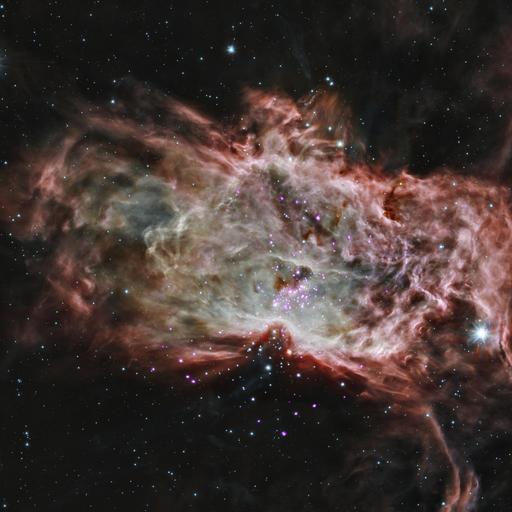MAKE A MEME
View Large Image

| View Original: | NASA's_Chandra_Delivers_New_Insight_into_Formation_of_Star_Clusters.jpg (3600x3600) | |||
| Download: | Original | Medium | Small | Thumb |
| Courtesy of: | www.flickr.com | More Like This | ||
| Keywords: flame nebula flamenebula nasa chandra chandra x-ray observatory chandraxrayobservatory star star cluster starcluster spitzer x-ray xray infrared astronomy underwater water Description: Astronomers have studied two star clusters to gain insight on how clusters of stars like our Sun form. This composite image shows one of the clusters, NGC 2024, in X-rays from Chandra (purple) and infrared data from Spitzer Space Telescope (red, green, and blue). A study of NGC 2024 and the Orion Nebula Cluster suggest that the stars on the outskirts of these clusters are older than those in the central regions. This is different from what the simplest idea of star formation predicts, where stars are born first in the center of a collapsing cloud of gas and dust when the density is large enough. Creator: Chandra X-ray Observatory Center Record URL: chandra.harvard.edu/photo/2014/flame/ Description: Astronomers have studied two star clusters to gain insight on how clusters of stars like our Sun form. This composite image shows one of the clusters, NGC 2024, in X-rays from Chandra (purple) and infrared data from Spitzer Space Telescope (red, green, and blue). A study of NGC 2024 and the Orion Nebula Cluster suggest that the stars on the outskirts of these clusters are older than those in the central regions. This is different from what the simplest idea of star formation predicts, where stars are born first in the center of a collapsing cloud of gas and dust when the density is large enough. Creator: Chandra X-ray Observatory Center Record URL: chandra.harvard.edu/photo/2014/flame/ | ||||